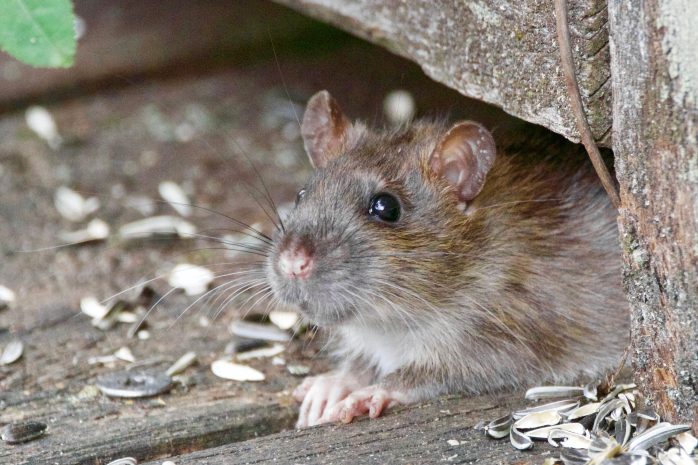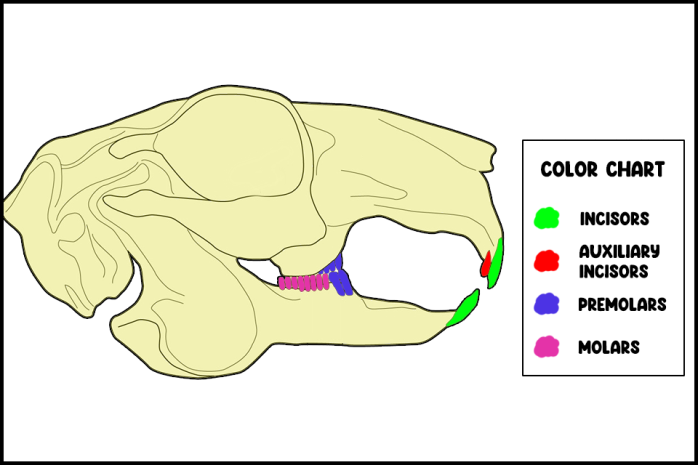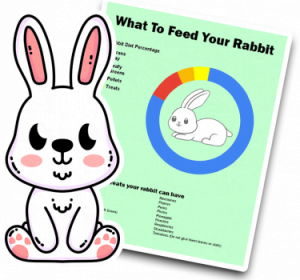
Have you ever looked at a cute little bunny hopping around and wondered if it’s a rodent? It’s a common misconception that rabbits are rodents, but the truth is they belong to a separate taxonomic group.
As an animal lover myself, I was always curious about the differences between rabbits and rodents. In this article, we’ll explore the taxonomy of these fascinating creatures and answer the question that’s been on your mind: are rabbits rodents? So, grab a cup of tea, and let’s dive in!

Before we delve in, it’s important to understand what a rodent is and why rabbits don’t fall into this group.
Rodents are mammals that belong to the order Rodentia, which is the largest order of mammals. They are characterized by their continuously growing incisors, which they use to gnaw on hard materials like wood and nuts.
Rodents have a single pair of incisors in the upper and lower jaw that grow continuously throughout their lives.
Lagomorphs are another order of mammals that are closely related to rodents. However, they have several distinct characteristics that set them apart. Lagomorphs have two pairs of upper incisors, and their teeth stop growing once they reach a certain length.

While rodents and lagomorphs share some similarities, there are several key differences between the two orders. These differences include:
Rodents have a single pair of upper and lower incisors, while lagomorphs have two pairs of upper incisors.

Rodents have only one pair of upper and lower incisors because their teeth continuously grow throughout their lives. These incisors are used for gnawing hard materials like nuts, seeds, and wood. Having only one pair of incisors allows rodents to keep their teeth sharp and prevent them from overgrowing.
However, Rabbits have two pairs of upper incisors because they have a unique diet and digestive system. As herbivores, rabbits primarily eat fibrous plant material that is tough to digest. The extra incisors allow them to effectively break down these plant fibers and extract the nutrients they need to survive. The two pairs of incisors work together to cut and grind the tough vegetation, making it easier to digest.
The skull structure of rodents and lagomorphs is also different. Rodents have a narrow skulls with large eye sockets, while lagomorphs have a broader skull with smaller eye sockets.
Rodents have a narrow skulls with large eye sockets because they rely heavily on their sense of vision to navigate their environments. Having large eyes allows rodents to see in low-light conditions and detect predators from a distance. Additionally, the narrow skull helps to reduce the weight of their head, making it easier for them to move and maneuver quickly.
According to the book “Rabbits: The Animal Answer Guide” by Susan Lumpkin and John Seidensticker, Lagomorphs have a broader skull with smaller eye sockets because they rely more on their sense of smell and hearing to navigate their environments. As herbivores, lagomorphs spend a lot of time searching for food and need to be able to detect predators from a distance.
Their broader skull structure allows for a larger surface area for their olfactory bulbs, which are responsible for their sense of smell.
Rodents have a simple stomach with a short large intestine, while lagomorphs have a more complex stomach and a longer large intestine. The differences in the digestive systems of rodents and lagomorphs are related to their distinct diets and digestive needs.
Rodents are primarily herbivores or omnivores and have a simple stomach with a short large intestine. Their digestive system is designed to break down food and extract nutrients efficiently quickly. The short large intestine allows for rapid absorption of nutrients before the waste is expelled from the body. This is an efficient way for rodents to extract as much nutrition as possible from their food.
On the other hand, lagomorphs are strict herbivores with a more complex stomach and a longer large intestine. This is because their plant-based diet is more difficult to digest and requires more time to break down.
The extra fermentation chambers in the lagomorphs’ stomachs help break down the fibrous plant material. At the same time, the longer large intestine allows for the further absorption of nutrients from the partially digested food.
So, while rodents have a more straightforward digestive system optimized for efficient nutrient absorption, lagomorphs have a more complex system that allows for the efficient breakdown and utilization of their plant-based diet.
So, based on the differences outlined above, it is clear that rabbits are not rodents. While they share some characteristics with rodents, such as their continuously growing incisors, they have two pairs of upper incisors and a different skull structure. Rabbits belong to the order Lagomorpha, which is separate from the order Rodentia.
Rabbits were initially classified as rodents because they share some physical and behavioral characteristics with rodents. For example, rabbits have continuously growing incisors, similar to rodents, which they use to gnaw on hard objects like bark and branches.
They also have a similar digestive system that allows them to extract nutrients from tough plant material.
However, as scientists studied the anatomy and behavior of rabbits more closely, they discovered significant differences that set rabbits apart from rodents. For example, rabbits have two pairs of upper incisors, while rodents have only one. Additionally, rabbits have a broader skull structure than rodents, better suited to their herbivorous diet.
As a result of these differences, rabbits were eventually reclassified as part of the order Lagomorpha, which is separate from the order Rodentia that contains rodents. While rabbits and rodents share some similarities, they are distinct groups of animals with different characteristics and adaptations.
The term “vermin” is often used to describe animals that are considered pests or nuisances. While rabbits can cause damage to gardens and crops, they are not typically considered vermin.
However, in certain situations, rabbits can become a problem. For example, if they overpopulate an area, they can cause damage to vegetation and compete with other native species for resources. Additionally, in some parts of the world, rabbits are considered invasive and hunted or controlled to prevent ecological damage.

By entering your email address you agree to receive emails from Cottontailclub. We'll respect your privacy and you can unsubscribe at any time.